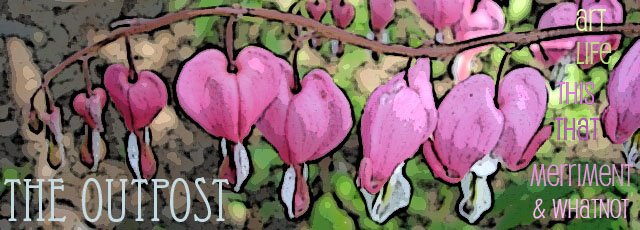

This work is part of a room-sized installation of 565 drawings of pen-and-ink flowers on paper napkins by artist
Jim Hodges. Hodges explores universal themes, and in this piece, "A Diary of Flowers - Above the Clouds" a correlation is made between the ephemeral nature of the flowers and the material they are drawn on. The 100 napkins in this piece are pinned onto the wall. "A Diary of Flowers", completed in 1995, is now part of the collection of
The Museum of Contemporary Art, Los Angeles.

More drawing on napkins from
"The Napkin Dad Daily" blog. He started drawing on napkins for his daughters' lunch bags and did these daily until his last daughter graduated from high school in 2005. That first year, he thought all the drawings were thrown out at the end of the lunch period, but for Father's Day his daughter presented him with all the napkins he had drawn for her as a gift. What a sweet story! And how dedicated is
that?
I am more prone to obsessively twisting and folding napkins than drawing on them.
When I was younger and holiday meals were hosted by my mother and grandmother, I was the one in charge of setting the table. I often took great pleasure in lining up the plates and silverware, placing the goblets and stemware, selecting candles and making centerpieces, and rolling the napkins into holders or folding them in different configurations. My mother has a buffet with stacks of cloth napkins in different colors and fabrics to choose from, and a wide selection of tablecloths, all ironed and folded and organized just so. Nowadays I am either a guest at a gathering that uses paper plates and napkins, or I am elbow deep in meal preparation and the table gets a last minute frenzied setting as the potatoes are getting mashed or the turkey sliced. I'm thinking about napkins today, though.
I think I once had a tiny little paperback book with diagrams of napkin folds, but haven't seen it for years. There are, though, plenty of sites that have instructions for fancy napkin folds ... like the Water Lily/Rosebud, Bird of Paradise, and Bishop's Hat instructions at
The Butler's Guild. (Really?)
Martha's site has some simple and elegant napkin folds featured. Happy Thanksgiving!





























